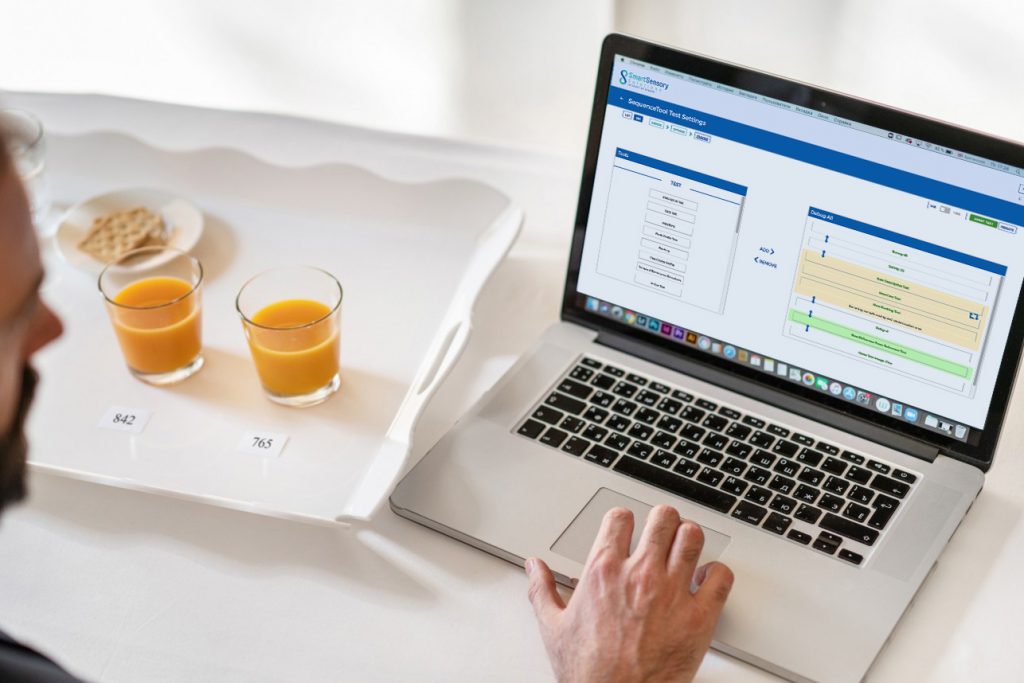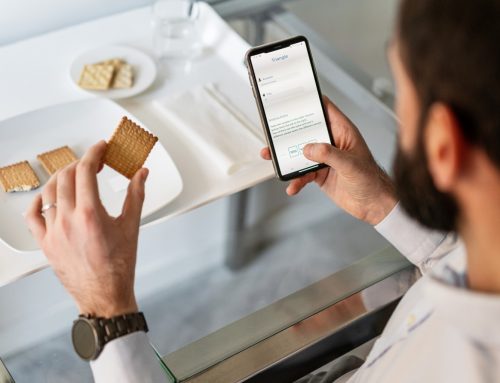The “must haves” to start a sensory analysis program.
Let’s start with the budget.
It is common to imply that a substantial budget is needed in order to start a sensory analysis program. The costs associated with the purchase of the sensory booths, the training of the panel and the availability of software for the management and statistical processing are considered the main factors that hinder the adoption of sensory tests and analyses.
Does the budget make a difference?
However, budget is only one side of the issue. Today, thanks to the solutions available on the market, it is possible to start a sensory analysis program progressively, by gradually acquiring the skills and materials necessary to transform the subjective assessments, which today are performed within most companies into objective results. This approach, which we can define as LEAN, focuses on a light and efficient operational management style since it aims at the result and the creation of measurable and quality outputs using just the right amount resources for that specific request of the moment.
The “must haves” for a sensory analysis program.
We’ve split up the list of important items to kickstart a sensory program. Here they are, listed in order of priority.
- Technical & scientific skills. Those are the basis of sensory science. There are several training courses on the subject, available online or in person and with different levels of complexity ( we suggest the Sensory Project Manager courses organized by the Italian Society of Sensory Analysis (SISS) or by the Spanish Sensory Professionals Association (AEPAS). Our team supports companies and research centers with training and advisory services aimed at kick-starting an internal sensory analysis program, from test design to result interpretation and decision-making. View more information about Smart Sensory Solutions’ services
- The panel is the fundamental element to perform sensory tests.There are different types of panel members: trained, informed and untrained consumers.In general, these people are selected within the company staff. When it comes to consumers, who are normally interviewed to obtain information related to the satisfaction of the products (Acceptability Tests), it is necessary to have at least sixty evaluations, which can be collected during fairs, visits to the company shops or by sending free samples to the consumers and asking them to fill a form in return (home tests). The training of judges is a practice that can be carried out progressively, depending on the needs of the program and on the products that are to be evaluated. Between 5 and 10 sessions of about one hour each are enough to train a panel to recognize the 5 fundamental flavours, the main smells and aromas that characterize a specific product and the determination of its texture. During these sessions it is also possible to calibrate the judges using standard solutions of a certain flavour/aroma, which serves a qualitative-quantitative reference. In this way you will achieve an alignment in the expression of the intensity of the characteristics of the products under evaluation.
- Software can help to perform the training sessions of your panel. Smart Sensory Solutions has developed some tools, dedicated to verifying the performance of the panel such as the matching module, that allows you to verify the correct recognition by the judges of specific gustatory and / or olfactory stimuli. On the other hand, Panel Check, is a free, open-source software that allows you to evaluate the performance of the panel during descriptive-quantitative analyses, in terms of discriminating ability, repeatability of responses and alignment with the panel.
Is it essential to have sensory analysis software?
Having a software for sensory analysis and consumer tests is very useful in the start-up phase of a sensory program. In fact, it allows you to save a lot of time in setting up the tests, collect immediately the results apply the statistical models to get the important information you need. A software can help you to make sure that the test is applied correctly and that all methods are carried out to eliminate the physiological and psychological errors that can ruin the validity of the test (e. g. coding and randomization in the presentation of the samples, the correct use of the scales, etc.).
The software on the market have an all-in-one setup which means high costs and specific skills.
Our software offers a modular solution with pre-set and individually usable tests.
In this way the user can choose to have only the test methods that are really needed based on the purpose of the sensory program: quality control (e. g. In / Out, Difference from Reference, etc.), research and development (e. g. Sensory Profile or Temporal Dominance Sensation) or consumer science and marketing research (e. g. CATA or the Acceptability Test).
This architecture allows to reduce the complexity of the software and to adapt the cost of the tool to the budget and, in time to the new needs that may arise. Each test module is associated with its own statistical and data visualisation in order to make the interpretation of the results fast and intuitive.
Sensory booths: yes or no?
Here, too, the right answer is to start off light and lean.
Sensory booths are a great way to improve the quality of your sensory testing. Their main purpose is to isolate the assessors and standardize the evaluation conditions. There are several models on the market at different costs.
If on your premises there isn’t a room assigned to the sensory testing activities and / or you don’t have budget availability for their purchase, it is possible to recreate similar conditions using simple desk dividers or panels that separate the different workstations (there are several available on the market).
It is not necessary for the judges to perform the evaluations at the same time, as they can work in shifts. For this reason, it may be enough to set up 4-6 testing stations and have the assessors show up in turns. This also makes the testing session more manageable from an organizational point of view. What is important to know is that it is necessary to standardize as much as possible, between the various sessions, the environmental conditions of the room used for the testing. This means to keep the temperature and brightness of the light constant and containing the spread of odours and noises coming from the production lines, in the testing room, as they may influence the results of the test.





